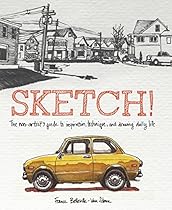

orange
#108761 in eBooks 2014-11-04 2014-11-04File Name: B00KAFVOLO
Review
43 of 45 people found the following review helpful. The Neuroscience Behind Modern Art Movements The Art Behind Advances in NeuroscienceBy Dr. Debra Jan BibelI do not know how this concise; clearly written; well-illustrated synopsis of the relationships of psycho-neurobiology and art appreciation will be received by the general reader. I regard this as an important book; but then I am a medical scientist and an artist already familiar with the experimental and historical evidence of the two associated disciplines. The 20th century saw a new approach to art and mental science; both applying narrow; minimalistic; reduced approaches to grasp the marrow of the larger processes. (Not covered is the Far East Asian form of art whose ink paintings have been for centuries simplistic with sparse lines and broad spaces that the viewer connects and fills in to construct familiar forms.) The primary focus is on how we see; how photon arrays falling on our retina are deconstructed; channeled; analyzed by element and position or orientation; and then associated through memory with learned forms; and how learning requires new synapses and stimulated molecular responsive pathways. Modern art has been an exploration in parallel with neuroscience. Cubism with its combined perspectives and discontinuity; abstract geometric paintings of simple; inherently or acquired emotional colors and color juxtapositions and line paths; and complex arrays of indefinite forms suggestive of texture or movement challenge the viewer; probing deep into the senses and perception. Metaphor was replaced with direct expression; and one artist; Mondrian; had mystical intentions in his later paintings while another; Rothko; whose works many regard as spiritual; had no such objective.Author; Nobel Prize-winner; Eric R. Kandel; whom some viewers of PBS and Charlie Rose know through his series of roundtables on the brain; is mainly a philosophical physicalist; but he does include the feedback looping of bottom-up; emergent reductionism and top-down; organismal holism of learned and experiential associations. Indeed; much of modern art is a mutually dependent creative union of form and receiver; i.e; not what the art is about; but instead what the viewer feels; imagines; or thinks. The book presents seminal examples of artistic insights. Artists; such as Mondrian; Klee; and Kandinsky; wrote essays about the psychological effect of certain artistic techniques and presentations; and Kandel explains the neuroscience behind it. Color fields present a psycho-neurological problem; as people perceive a given color differently; dependent on distance; lighting intensity; hue; and angle; contrast; adjacent hues; and in the instance of color-blindness; neurology. Some artists create optical illusions and stimulate optic centers; with the viewer perceiving shapes; hues; contours; and elevations that are not actually present; further questioning our reality. Other artists take mundane items or icons and craft their forms or images into a different way of seeing; as in Pop Art; bringing sociological and socio-political aspects into fine focus. I hope that this small book finds its way into science and art curricula; interdisciplinary studies; and into the hands of the general reader.26 of 26 people found the following review helpful. this book is the perfect gift you can get for yourselfBy GonzaEverything Kandel writes; needs to be read. That said; if you are interested in art and paintings and you are also a connoisseur of the Human Brain; this book is the perfect gift you can get for yourself. I would have just loved to know more about arts to enjoy this book as it should; anyway its clear and full of pictures; so dont worry.Sono sempre stata dellidea che sia necessario leggere qualsiasi cosa scritta da Eric Kandel; detto questo se siete interessati allarte e alla pittura e vi considerate un "fine conoscitore" delle neuroscienze; questo libro eacute; il regalo migliore che possiate farvi. Io avrei solo desiderato conoscere piuacute; storia dellarte per apprezzarlo in toto; ma non preoccupatevi percheacute; eacute; pieno di immagini.1 of 1 people found the following review helpful. An exposition of the learning in history of art.By Edoardo AngeloniA special book about the connection between science of mind and art; particularly modern painting. The author is a famous expert of neurology questions and he explicates to the lector how the interpretation about the better painters of 1900 is correlated to the achieving of new informations.Those painters have had their approach reading in their works particularities of the universe; whom they have seen in a way between subjective and objective. So the perception has moved the inner connection of the mind and the student of art has correlated with the memory all that he learned.